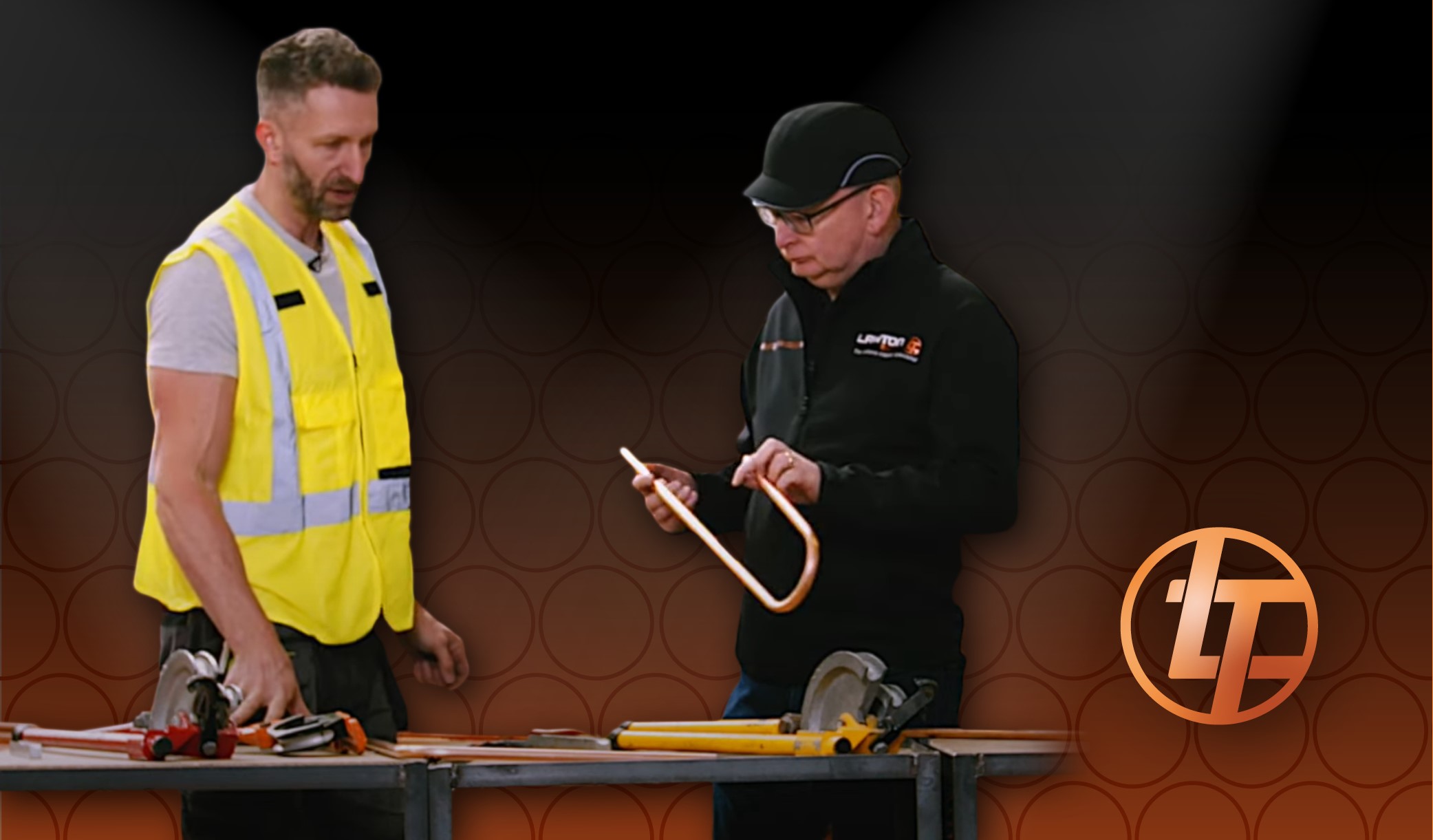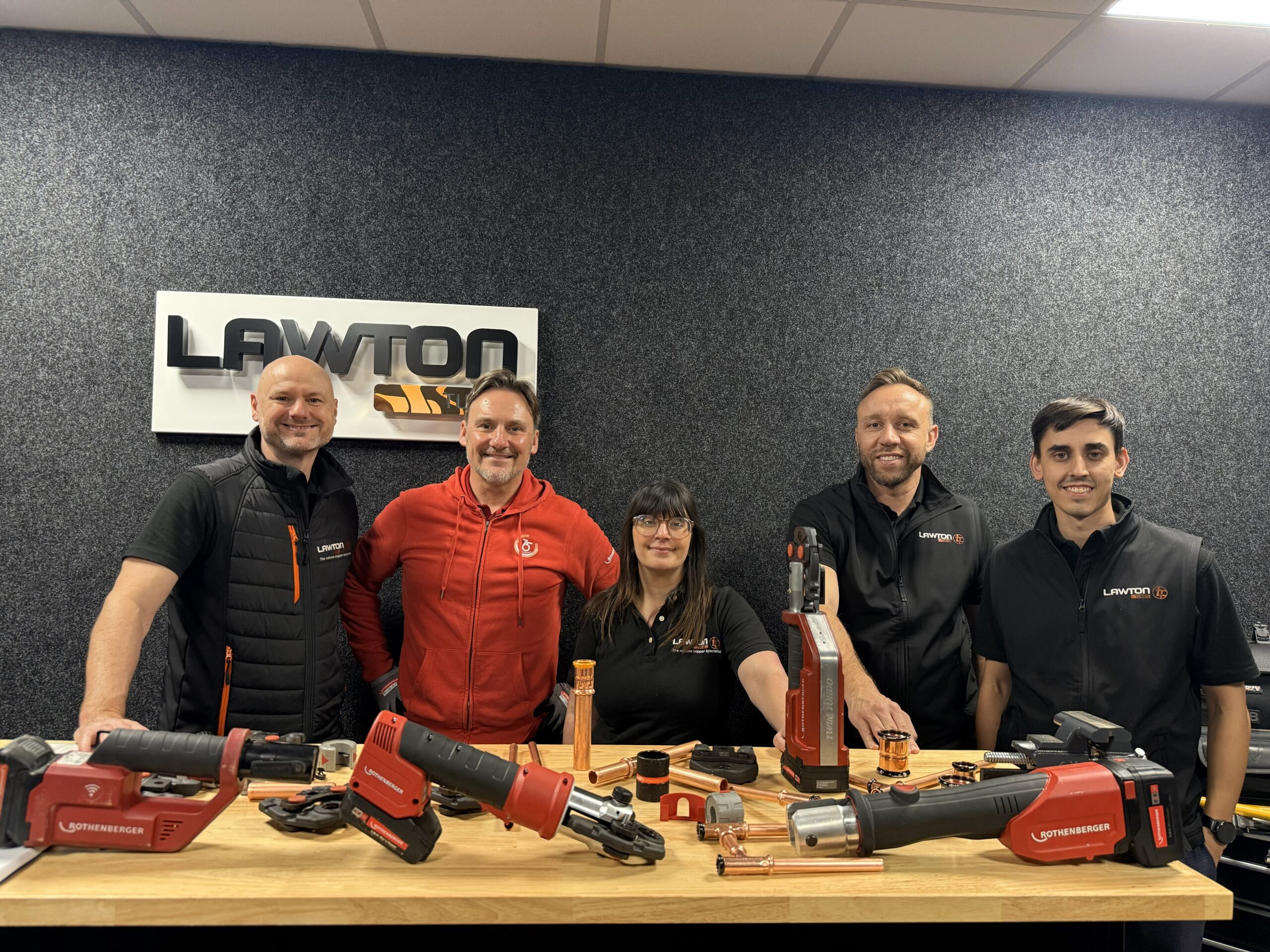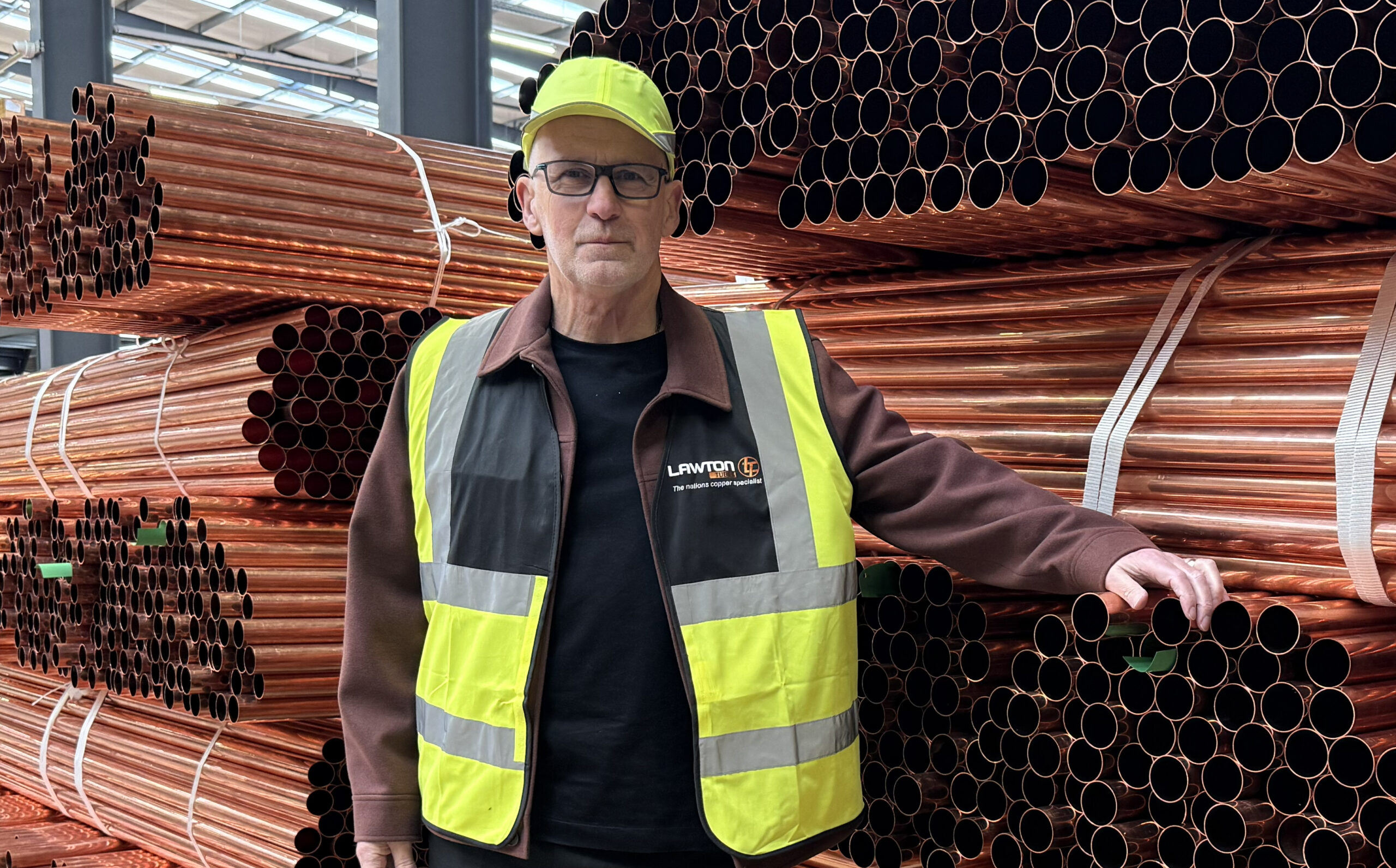
If you’re a plumber who works in copper, you’ll likely be familiar with the challenges that come with bending copper tubes.
One problem that can arise when using a traditional scissor bender to bend copper plumbing tube is a rippling or wrinkling of the tube at the site of the bend.
This is an issue for several reasons: Firstly, it wastes time and effort, slowing down the job and forcing you to repeat the same processes. Secondly, it’s a costly waste of materials that leaves you out of pocket with nothing but an ugly bit of pipe to show for it.
So, what causes copper pipes to ripple when you pull a bend, and how can you prevent this from happening?
Check your copper pipes
Many factors can cause the rippling effect you sometimes get when bending copper pipes. One of the most popular is that the copper pipe itself is substandard, too thin, or faulty.
“When you remove the copper pipe from the bender, you want a nice smooth bend,” says plumber and Lawton Tubes ambassador Peter Booth, aka PB Plumber. “But sometimes, a pipe will get a ripple on it, and people say it’s the quality of the copper, that they don’t make copper pipes like they used to, and the walls are too thin.”
But the reality is this is very unlikely to be the case. Copper tubes are manufactured to exceedingly strict standards, as Robert Lawton, Marketing & International Sales Director for Lawton Tubes, explains:
“In the UK and Europe, industry-standard copper plumbing tubes are manufactured to EN 1057. The most popular UK size, 15mm x 0.7mm half-hard copper plumbing tubes, are covered with a kitemark, a mark of quality audited by British Standards. It also carries a 25-year warranty against manufacturer defects. We work to strict tolerances. There are tolerances on the wall thickness, OD, and length – every aspect of our copper pipe is manufactured according to tight specifications. And every batch is inspected in accordance with British Standards.”
Quality assured
Lawton Tubes is so committed to the quality of their copper pipes that the company carries out in-house testing on any pipe that’s caused customers to question its integrity – including rippling during bending.
“There are a few quick, easy checks you can do on-site to rule out whether it’s the pipe or not,” says Robert. “The first is to use another piece of copper pipe from a different batch. All pipes are batch marked, so it’s easy to see which one they’ve come from. Another is to use a competitor’s pipe to rule out whether it’s a fault with the supplier.”
“If you’ve done both these things and are adamant the copper pipe is the issue, you can send us a sample length, and we’ll carry out some in-house tests. These include a hardness test to check if the pipe is within the tolerances of the hardness, a wall thickness test, and an OD test. Upon request, we can video these taking place, so you can see for yourself if the issue really is with the copper pipe and whether it’s within spec or not.”
Check your bender
If it’s not the quality of the copper tube that’s at fault, could it be the quality of the scissor bender that causes some copper pipes to ripple when bent?
“It could be the pipe bender you’re using is a bit loose, or it’s not been cleaned, or it’s maybe been dropped,” says Peter. “Sometimes, lost or damaged parts are replaced with ones from another bending tool. All these things can affect the quality of the bend. Given the strict tolerances used in copper pipe manufacture, it’s much more likely to be a problem with the bender than the quality of the copper pipe you’re using.”
Sometimes, it’s not a case of the bender being at fault but that you’re actually using the wrong kind of bender for the job.
“I have a Bacho pipe bender,” says Peter. “Everybody wants one because you can’t get them anymore. I bought mine at a tool fair. It’s meant to be able to pull a 180 in 15mm copper. I’d say 70 percent of the time, it performs okay, but the rest of the time it will ripple 15 x 0.7 copper pipe. I spoke to Bacho, and they said that’s because their pipe bender was designed for use by the European market.”
European 1mm copper pipe
In most European countries, standard plumbing pipes have a wall thickness of 1mm instead of the standard 0.7mm wall thickness used in UK plumbing. That’s because typical European plumbing is designed to cope with the higher working pressures commonly found across Europe.
If you’re looking for a thicker copper pipe, 15mm x 1mm copper piping – classed as Table Y – is available in the UK from Lawton Tubes. It’s manufactured to the same tolerances, has the same 25-year warranty, and has the same certifications as the 15mm x 0.7mm Table X copper pipe. The only difference is that it has a thicker wall.
It also pulls a perfectly smooth 180 bend using a Bacho pipe bender. Proof that using a tool that’s appropriate for the thickness of the pipe you’re working with yields a better result.
“You can use 1mm copper tube in high-pressure systems,” explains Robert. “It’s 30 percent more expensive than the 0.7mm copper tube because it’s using 30 percent more copper. But if you’re after a thicker, heavier copper tube, you can request 1mm copper pipe from your merchant.”
Table Y 1mm copper pipe is compatible with standard UK fittings. That’s because despite the pipe wall being 0.3mm thicker, the OD is the same as standard 15mm copper pipe.
“Fittings are designed to take a higher pressure than the tube,” says Robert. “So standard UK fittings are suitable for use with 1mm copper pipe in high-pressure systems as long as they carry the appropriate kitemark, which all our Lawton Tube fittings do.”
In conclusion
Rippling is rarely caused by poor-quality copper pipes or the result of using copper pipes that are too thin. It can be an issue if the bender you are using is too loose, damaged, dirty, or meant for use on thicker copper pipe, such as the 1mm copper plumbing tube more commonly found in Europe.
Ensuring your pipe bender is well maintained and appropriate for use with the copper pipe you’re bending will give you a smoother bend.
Do you require a thicker pipe? 1mm copper pipes are available from UK merchants, including Lawton Tubes, which also stocks compatible fittings.
If you’re still experiencing rippling and believe it’s down to the copper tube, Lawton Tubes offers an in-house testing service to determine whether your tube meets British Standards.
All Lawton Tubes’ copper plumbing pipes are manufactured to EN 1057, kitemarked and inspected in accordance with British Standards. It also carries a 25-year warranty against manufacturer defects. See our full range here.



